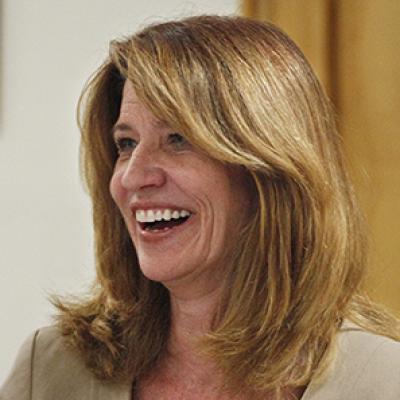
Renita Coleman has 15 years of experience as a newspaper journalist and a Ph.D. from the University of Missouri. "Her latest book is "Designing Experiments for the Social Sciences: How to Plan, Create and Execute Research Using Experiments," published by SAGE. She is an associated editor of Journalism & Mass Communication Quarterly."
Her research focuses on agenda-setting, race, visual communication and ethics. She has studied the effects of photographs on ethical reasoning, the framing and attribution of responsibility in health news, and the moral development of journalists and public relations practitioners, among other topics. She has published more than 30 peer-reviewed articles in academic journals including Journal of Communication, Journalism & Mass Communication Quarterly, Journal of Broadcasting and Electronic Media, Journal of Mass Media Ethics, Visual Communication Quarterly, Newspaper Research Journal, Journalism, and Journalism Studies. In addition to the new book, she has another book, “The Moral Media: How Journalists Reason About Ethics,” published in 2005 with co-author with Lee Wilkins of the University of Missouri.
Before beginning her academic career, Coleman was a journalist at newspapers and magazines for 15 years. She was a reporter, editor, and designer at the Raleigh, N.C. News & Observer, the Sarasota FL Herald-Tribune, and the Orlando, FL Sentinel among other news organizations.
Coleman teaches undergraduate and graduate courses in experimental design, lifestyle journalism, and ethics.
Ph.D. 2001 University of Missouri Columbia, MO
M.A. 1997 University of Missouri Columbia, MO
B.S. 1979 University of Florida Gainesville, FL
SELECTED WORKS
Coleman, R. & Wu, H.D. (2015,). Image and Emotion in Voter Decisions: The Affect Agenda. New York: Lexington, a division of Rowman & Littlefield.
Wilkins, L. & Coleman, R. (2005). The moral media: How journalists reason about ethics. Mahwah, N.J.: Lawrence Erlbaum Associates.
Coleman, R. (2010). “Framing the pictures in our heads: Exploring the framing and agenda-setting effects of visual images,” In P. D’Angelo and J. Kuypers (eds.), Doing news framing analysis: Empirical, theoretical, and normative perspectives. Chapter 10, pp 233-261. Routledge.
Coleman, R., McCombs, M., Shaw, D., & Weaver, D. (2009). Agenda setting (pp. 147-160). In Thomas Hanitzsch & Karin Wahl-Jorgensen (Eds). Handbook of journalism studies. NY: Routledge.
Wu, H. D., & Coleman, R. (2014) The affective effect on political judgment: Comparing the influences of candidate attributes and issue congruence. Journalism & Mass Communication Quarterly. 91(3 Fall):530-543.
Suran, M., Holton, A., Coleman, R. (2014). Topical punch: Health topics as drivers of reader responses to online news articles. Journalism & Mass Communication Quarterly, 94(4 Winter): 725-739.
Lee, J. K., & Coleman, R. (2014). Testing generational, life-cycle, and period effects of age on agenda setting. Mass Communication and Society, 17(1): 3-25
Coleman, R. (2011). Color blind: Race and the ethical reasoning of African Americans on journalism dilemmas. Journalism and Mass Communication Quarterly, 88 (Summer 2):337-351.
Coleman, R. (2011). The moral judgment of minority journalists: Evidence from Asian American, Black, and Hispanic professional journalists. Mass Communication and Society, 14(5 Sept.-Oct.), 578-599.
Coleman, R., & Wu, H. D. (2010). Proposing emotion as a dimension of affective agenda-setting: Separating affect into two components and comparing their second-level effects. Journalism and Mass Communication Quarterly, 82(2 summer):315-327.
Wu, H. D., & Coleman, R. (2009). Advancing agenda-setting theory: The comparative strength and new contingent conditions of the two levels of agenda-setting effects. Journalism and Mass Communication Quarterly. 86 (4 winter): 775-789.
Coleman, R. (2007). The effect of visuals on ethical reasoning: What’s a photograph worth to journalists making moral decisions? Journalism & Mass Communication Quarterly, Winter, 83, 4: 835-850.
Coleman, R. & Banning, S. (2006). Network TV News’ Affective Framing of the Presidential Candidates: Evidence for a second-Level Agenda-Setting Effect through Visual Framing. Journalism & Mass Communication Quarterly, 83(2, summer): 313-328.
ACADEMIC HONORS AND AWARDS
Top Faculty Paper in Scholastic Journalism Division, AEJMC, 2014.
Named 1st out of 35 for AEJMC top paper convention productivity 1999-2008 in study published in Journal & Mass Communication Educator, Spring 2010.
Top Faculty paper, third place, Communication Theory & Methodology Division, AEJMC, 2007.
Top Faculty paper, first place, Minorities & Communication Division, AEJMC, 2006
Top Faculty paper, first place, Minorities & Communication Division, AEJMC, 2005
Top Faculty paper, first place, Mass Com & Society Division, AEJMC, 2004.
Teacher of the Year, Mass Communication. 2003-2004. LSU Tiger Athletic Foundation.
Top Paper, Mass Communication Division, ICA, 2003.
Top Faculty Paper, Visual Communication Division, AEJMC, 2003.
Teacher of the Year, Mass Communication. 2002-2003. LSU Tiger Athletic Foundation.
Top Faculty Paper, third place. Minorities & Communication Division, AEJMC, 2002.
TEACHING EXPERIENCE
Associate Professor, University of Texas, Austin. School of Journalism. Fall 2009 to present.
- J384 Qualitative Methods, doctoral level
- J395 Reporting Public Health & Medicine, graduate and undergraduate
- J380V Visual Communication, graduate level
- J349T/J395 Ethics, graduate and undergraduate
- J395 Doctoral Proseminar
- J395 Experimental Design
Assistant Professor, University of Texas, Austin. School of Journalism. Fall 2005 to Fall 2009 when tenured.
- J380V Visual Communication, graduate level
- J349T/J395 Ethics, graduate and undergraduate
- J363 Theory, undergraduate
- J395 Doctoral Proseminar
- J363 Visual design, undergraduate
Assistant Professor, Louisiana State University, Manship School of Mass Communication. Fall 2001 to Spring 2005.
- MC 7021, Mass Communication Theory, graduate level
- MC 7001 Research Methods, graduate level
- MC 2015, Visual Communication
- MC 4001, Public Relations Writing
- MC 4270, News Production for the Internet
Instructor, University of Missouri, School of Journalism. Fall 1997 through Fall 2000.
- J-408, Research Methods, graduate level
- J-105 News Writing
- J-362, Magazine Design
Teaching Assistant, University of Missouri, School of Journalism. Fall 1995 through Fall 1998.
- J-306, Advanced Reporting
- J-362, Magazine Design
Adjunct Instructor, University of Florida, College of Journalism. Fall 1982 and Spring 1983.
- MMC 2100, Writing for Mass Communications
